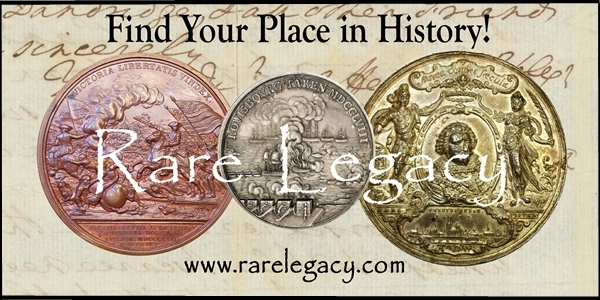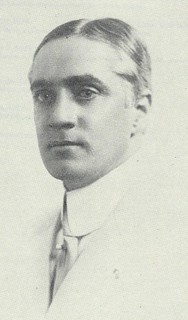
PREV ARTICLE
NEXT ARTICLE
FULL ISSUE
PREV FULL ISSUE
THOMAS LINDSAY ELDER (1874-1948)
John Lupia submitted the following information from his Encyclopedic Dictionary of Numismatic Biographies for this
week's installment of his series. Thanks! As always, this is only an excerpt with the full article and bibliography available online.
This week's subject is dealer Tom Elder. -Editor
Thomas Elder is among the most prominent and influential American numismatists and coin dealers of the first three decades of the 20th century up to the early 1930's when other prominent dealers like B. Max Mehl, Wayte Raymond, Joe and Morty Stack, emerged dominating the market overshadowing him. He began collecting tobacco tin tags at age eight in 1882 and coins at thirteen in 1887 when living in Bethlehem, Pennsylvania. For the uninitiated collecting tobacco tin tags was a widespread hobby much like cigar band collecting or tobacco tin collecting in America and in Europe and was a typical feature published in The Golden Argosy; The Oologist; The American Magazine of Natural Science; Mineralogist's Monthly; and Philatelic West and other collecting periodicals during the 1880's and 1890's. In his lifetime of collecting his favorite pieces were store cards, tokens, medals and political pieces. He studied at Park Institute and Beaver College. From 1899 to 1901 he lived at 343 Princeton Place, Pittsburg, Pennsylvania; (April 1902 The Numismatist) 843 Princeton Place, E.E., Pittsburg, Pennsylvania; (Station A, Pittsburg, Pennsylvania). His first ad in the September 1899 issue of The Numismatist, pages 207-8, was an announcement for his eight-page fixed priced list of ancient and medieval coins and served as a notice for his small display ad forthcoming in the November issue for Greek, Bactrian, Parthian, Egyptian, Roman, Byzantine, and medieval British and French coins. A similar but larger size ad appeared in the January 1900 issue on page 33. He got his feet wet writing in The Numismatist in the February 1901 issue describing five medals in his collection and inquiring further information about the Palmetto "No submission" token. B. P. Wright replied in the April issue correcting him about the attribution, and also about the Pitt medal. Also, he wrote a series "Notes on the Coinage of the Greeks,” in The Philatelic West. By late fall through December 1901 his second series titled “Money in Circulation in America in Colonial Times,” was also published in Philatelic West. 
In June of 1902 he lived at 238 Sheridan Avenue, Pittsburg (stamped on his aluminum store card, and on his printed business envelopes) and this new address was published in the July issue of The Numismatist, and also appears on his new printed business envelopes that refer to his corporate name as Thomas L. Elder, Importer of Ancient, Medieval and Modern Coins, Inc. Also, another envelope, Thomas L. Elder, Dealer in Ancient, Mediaeval and Modern Coins, Paper Money, Gem Stones, Curios, Etc. 238 Sheridan Ave., Pittsburg, Pa. Price List Free. In May 1904 he moved to 32 East 23rd Street, New York City, NY, and later on at 8-10 W. 37th Street, New York. He spent thirty-five years in New York before retiring to South Carolina. He was an active member of the ANS since January 18, 1904. By 1906 he served on the ANS committee to improve the artistic design of American coinage which met with President Theodore Roosevelt. Elder always seemed to show a dark side to his character which seemed to grow stronger from 1906 to 1909, like a blister that swelled up and burst. Dave Bowers rightly called his writing "feisty and irreverent" in his seminal article in Rare Coin Review (Winter 1988) : 59-62; John W. Adams, "One might accuse Elder of being short-tempered, sharp-tongued or self-righteous but never dull or dishonest." U.S. Numismatic Literature, Vol. 2, page 25; and Pete Smith aptly called him "Opinionated and Outspoken" in The Numismatist (2000) : 399-400. In the 1906, besides publishing his monthly periodical, fixed price coin lists, and other circulars, flyers and business letterheads, invoices, envelopes and post cards he ran The Elder Numismatic Press publishing numismatic literature including : William Cowper Prime, Money of the Bible (1906); Ed Frossard, W W Hays, and Thomas L Elder, Varieties of United States Cents of the Year 1794 (1910); Frank C Higgins, The Chinese Numismatic Riddle; The Elder Rare Coin Book (1913); Ebenezer Gilbert, The United States Half Cents. From the First Year of Issue, in 1793, to the Year When Discontinued, 1857. All Dates and Varieties Described and Illustrated (1916); ... He was among the "dirty dozen" founders of The New York Numismatic Club on December 11, 1908, at Keen's Old English Chop House located on 36th and 6th Avenue. These were all die-hard numismatists and collectors each one a notable figure critical to the history of American numismatic history. From 1914 to 1916 Elder might have been instrumental in influencing the U. S. Mint designers A. A. Weinman and Herman A. MacNeil in their new designs for the dime, quarter and half dollars, but this claim may very well be an exaggeration. By January 1937 he was desperate to close the Elder Coin & Curio Corporation and ran an ad very anxiously hoping to find someone to buy him out and take over the company. But there were no takers and he was forced to close. He died, as John W. Adams has put it, "a sick and cynical old man" on May 11, 1948, at Travelers Rest, South Carolina, about 9 miles north of Greenville. An obituary appeared in the June issue 1948 of Hobbies Magazine, on page 131. His obituary did not appear in The Numismatist until July and with a scanty obituary notice. The career of Thomas L. Elder may rightly be described as coming in like a roaring lion and having gone out in a very faint whisper, or was it a whimper. Perhaps his best epitaph was written by John W. Adams, "He could cause the fur to fly but none could doubt his sincerity and, in the end, few can match the breadth of his contributions." U.S. Numismatic Literature, Vol. 2, page 25. The inventory left by Elder purportedly was taken over by his son-in-law, Paul S. Seitz (1902-1978), a bank bookkeeper, who traded out of Glen Rock, Pennsylvania, and in time became well-known as a respectable dealer. Seitz's wife was Ethel K. Seitz (1903-1995). The earliest known marriage of Thomas L. Elder was in 1908, five years after the birth of Ethel. Seitz was related to Elder through his mother Lydia May Seitz (1887-1937), and was not his son-in-law. To read the complete article, see:

Wayne Homren, Editor The Numismatic Bibliomania Society is a non-profit organization promoting numismatic literature. See our web site at coinbooks.org. To submit items for publication in The E-Sylum, write to the Editor at this address: whomren@gmail.com To subscribe go to: https://my.binhost.com/lists/listinfo/esylum All Rights Reserved. NBS Home Page Contact the NBS webmaster 
|
